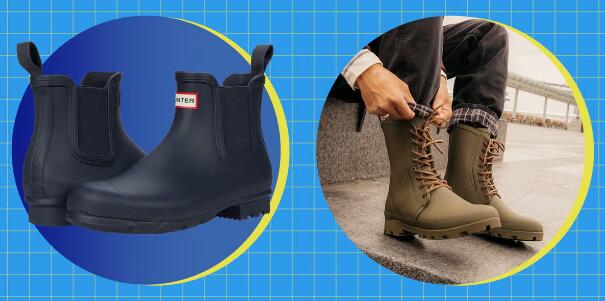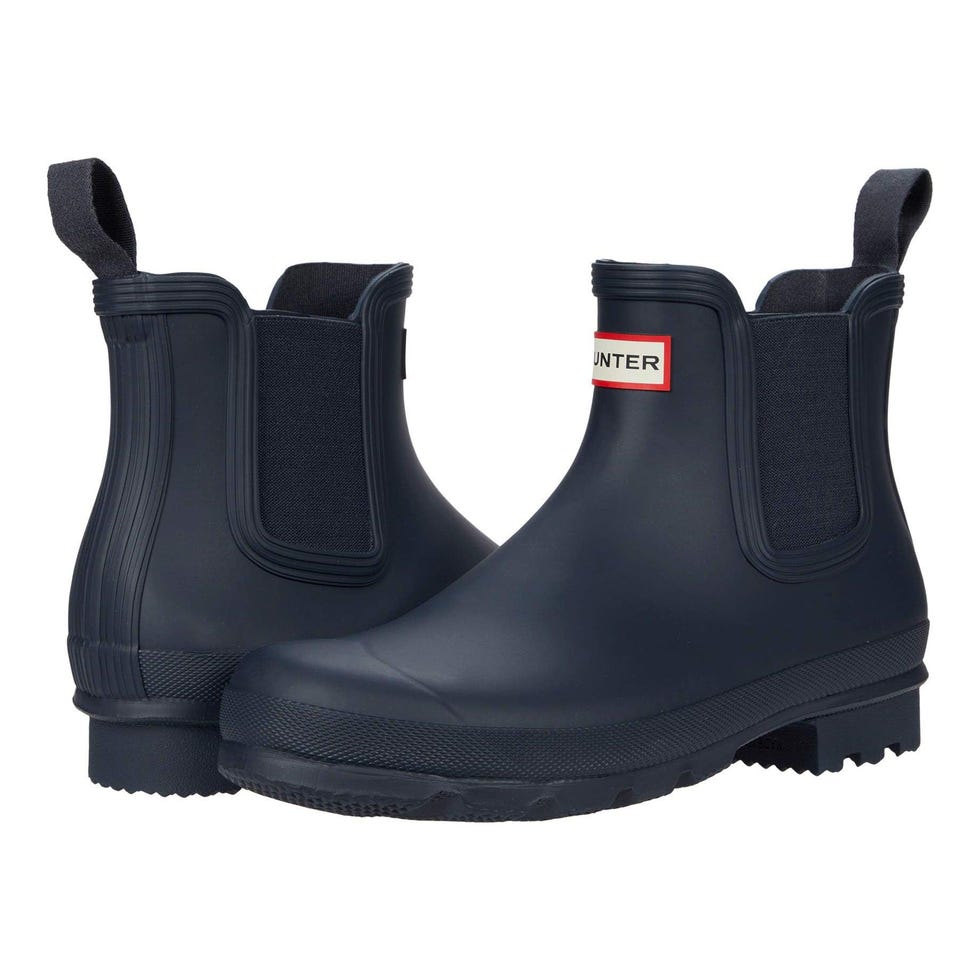EW SENSATIONS ARE more uncomfortable than walking around in soggy socks. Enter the best waterproof boots for men, which will keep your feet dry and cozy in wet conditions. The best part is that you don’t have to sacrifice style to keep water out. We searched for and field tested over a dozen moisture-resistant shoes to find the ones that kept our toes dry, and looked great doing it. All of the best waterproof boot recommended by our menswear editors are are stylish enough to wear all day in most casual settings.
Best Waterproof Boots for Men
After selecting boots that are marketed as waterproof, our testers didn’t just subject each pair to a little rain. They checked for breathability, support, comfortable insoles, and how deep they could be submerged without letting water in. Different activities require different features from boots so we tried to provide options for every situation where your shoes may be getting wet. Whether you’re commuting to work in the rain, hiking a puddle laden trail, spending all day fishing with your buddies, don’t let soggy shoes ruin your day.
What to Consider
Material
The tradeoff that you have to keep in mind when selecting a material waterproof boots is breathability. Rubber is the only 100% waterproof material, but it is also the least breathable. That means while it keeps water out, rubber also locks sweat and body heat in. If you’re selecting a rubber rain boot, look for some type of ventilation like ankle gussets—the flexible panels found on Chelsea boots—or mesh panels.
To get more breathability from a waterproof boot, look for other materials like nylon and leather that have been treated to keep moisture out. If you’re dealing with situations where you’re going to sweat, or if you plan on wearing boots all day long, you will need a higher degree of breathability. The big tradeoff here is that most waterproof treatments degrade with time and will eventually need to be reapplied.
Welt
A welt is how the upper part of a shoe is attached to the sole. This is the most vulnerable area to moisture creeping in. Here are the types of welts to look for in descending order of effectiveness.
- Injection Molded: When the entire body of the shoe is one solid piece of material, meaning that there is no welt. No welt means it is impossible for water to get in.
- Cemented: Most waterproof boots have cemented welts, which means the upper is glued to the sole. As long as the adhesive is strong enough, this creates a watertight seal that is effective even when fully submerged.
- Stitched Welt: Most leather shoes have a stitched welt. There are different varieties, but the only two that can be waterproof are Goodyear welts and storm welts. However, even these aren’t perfect, as it is very challenging to make a leather boot truly waterproof.
Seams and Closure
The guideline is that the fewer seams a boot has, the more likely it is to be waterproof. Leather boots and hiking boots that have several seams are only waterproof if the entire shoe has been treated in some way to create a moisture barrier.
Boots with not closure are the most waterproof, meaning that you slip your foot right in. Elastic gussets on the ankles are helpful for comfort, flexibility, and breathability. Just make sure that the seams along the gussets are watertight. If the boot has a lace-up closure, check how high up the boot the tongue is attached to the upper. The space between the tongue and the upper is one of the most vulnerable spots to letting water in.
How We Selected
To find the best waterproof boots for men, Men’s Health writers and editors looked for boots that were marketed as waterproof and put that claim to the test. They tested them to see how well they kept our rain and splashing. and how deeply they could be submerged. With the boots that performed the best with keeping water out, they then looked how much support and cushioning was provided, as well as how breathable the boots were. It was important to cover every type of activity where moisture is a problem with the best footwear option.
Along with comfort and water resistance, style was the most important factor in testing. Every boot was worn with multiple outfits to see how functional it was for everyday wear, along with its intended use. After all, even the most water resistant boot isn’t helpful if you don’t want to be seen wearing it.











